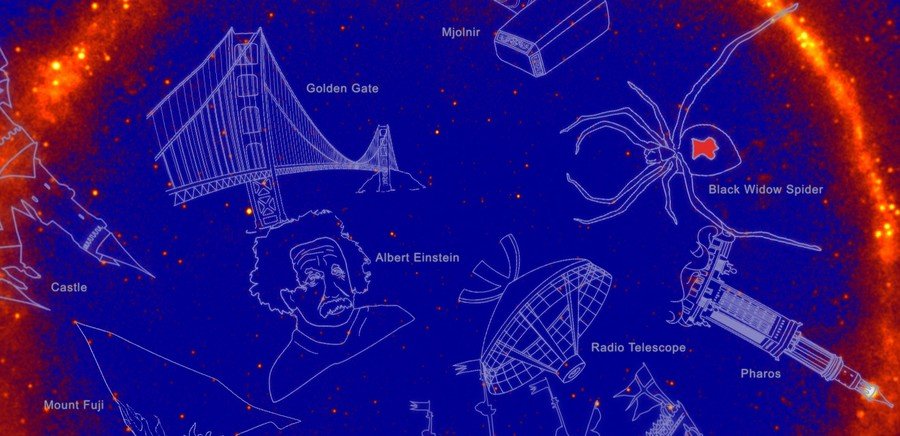Godzilla, Tardis & Einstein: NASA redraws constellations to map gamma-ray sky (IMAGE, VIDEOS)
It’s probably the only time Albert Einstein, Godzilla and the Incredible Hulk will ever share an accolade, but the iconic figures are now part of constellations of extremely high-energy light sources grouped by NASA.
The US space agency has mapped gamma ray sources from across the universe such as pulsars, exploding stars and black holes into constellations designed to look like iconic comic book characters, science heroes, landmarks – and even Schrodinger’s cat.
Gamma-rays in the sky, seen by our @NASAFermi telescope! To celebrate the mission's 10-year anniversary, scientists used Fermi sources to create a set of unofficial gamma-ray constellations. Explore the interactive map and find them all: https://t.co/m3pF7WHOQTpic.twitter.com/pPtiPfHJY1
— NASA (@NASA) October 19, 2018
In celebration of the Fermi Gamma Ray Space Telescope’s 10 years of service, NASA drew up the quirky set of constellations to promote the work of its industrious orbiter. Designed in the same vein as star constellations, the areas of powerful light energy, or gamma rays, have been shaped like Marvel’s Incredible Hulk, the Eiffel Tower in France, and the reptilian movie monster Godzilla.
READ MORE: Space junk plunges out of orbit and crashes on California farm (PHOTOS)
Another of the constellations has been titled Schrodinger’s Cat – named after the famous thought experiment by the eponymous Austrian physicist. Meanwhile, Albert Einstein, Vasa (a Swedish king’s lost ship of treasure), Dr Who’s Tardis, and Mount Fuji also get their name up in lights. Electromagnetic and radioactive stellar lights, that is.

The Fermi telescope has been in operation since July 2008, when it began its job of scanning the skies for unusual light patterns. So far, the orbiter has spotted gamma-ray sources from everything like explosive supernovas to the creation of black holes – phenomena that normally escape the view of the naked eye.
“Developing these unofficial constellations was a fun way to highlight a decade of Fermi’s accomplishments,” said Fermi project scientist, Julie McEnery. “One way or another, all of the gamma-ray constellations have a tie-in to Fermi science.”
Images of the gamma-ray collections has been turned into an interactive page, where people can explore many of Fermi’s discoveries. The work coincides with a new catalog of gamma-ray sources, which is in production with help from atomic energy experts.
“Fermi is still going strong, and we are now preparing a new all-sky catalog,” said Jean Ballet, a Fermi team member at the French Atomic Energy Commission. “This will add about 2,000 sources, many varying greatly in brightness, further enriching these constellations and enlivening the high-energy sky.”
Think your friends would be interested? Share this story!














